
Legendary History of Koa Wood of the Hawaiian Archipelago

The beautiful colors of Hawaiian koa wood range from Angelic golden blonde, to Titian brownish-orange, to deep Venetian red. Each Hawaiian koa bookmark is a work of art. The chatoyancy or lustrous iridescence under bright sunlight is the most desirable attribute of Hawaiian koa wood. Hawaiian koa wood grain structures have unique varying flow patterns. Ancient Hawaiians revered the beauty and value of handcrafted koa wood as a gift suitable for kings and queens, especially for Hawaiian King David Kalakaua and Queen Kapiolani [https://www.mcall.com/entertainment/mc-xpm-2012-11-17-mc-hawaii-royal-history-20121117-story.html]. King David Kalākaua was the last king of Hawaii. King David Kalākaua ruled from 1874 to 1891, and was the original “Most Interesting Man In The World” [https://www.wbur.org/endlessthread/2018/08/10/david-kalakaua].
The first koa tree was brought to the islands by the ancient Polynesian voyagers. The ancient voyagers settled in the Hawaiian island chain once known as the Sandwich Islands. The Hawaiian archipelago was named in 1778 by Captain James Cook, who named the islands after the British Earl of Sandwich [https://core.ac.uk/download/pdf/5014763.pdf]. Koa wood was used to make weapons and tools by the ancient Hawaiians. The wood was also used to build canoes and furniture [https://www.nps.gov/hale/learn/historyculture/hawaiian-tools.htm]. Koa wood continues to be cherished by the Hawaiian people.

Ancient Hawaiian weapons were called “lei-o-mano” [https://byuh-archives.org/digital-heritage/lei-o-mano-shark-tooth-weapon]. The Hawaiian Lei o Mano or the shark-tooth club, bone, rock, shell or shark’s teeth were used in place of metal for the purpose of tearing or piercing flesh [https://www.calvertmarinemuseum.com/DocumentCenter/View/732/Volume-28-Number-4-December-2013?bidId=].
These weapons were made from shark's teeth, marlin bills, and koa wood. They were often employed for hand-to-hand combat and were highly effective with slashing and ripping the flesh in one single cross-body motion, leaving the unfortunate victim eviscerated and a typical example of the ability of the conquering warriors [https://lymanmuseum.org/event/hawaiian-weapons-of-war/]. Alika Tejada, pūkaua (war leader) for the High Chief at Pu`ukoholā Heiau near Kohala gave a deeply informative presentation of ancient Hawaiian weapons at the Lyman Museum located on the Big Island of Hawaii back in 2014 [https://www.oha.org/wp-content/uploads/Exhibit-F_WKOP-Ethnohistorical-Study-Final-opt-1-3401.pdf].

Koa is an important part of traditional and modern Hawaiian culture. The plants and animals found in Hawaiʻi, many of which are found nowhere else, have shaped this unique culture. Koa is regarded as an important tree that represents strength and the warrior spirit. The Hawaiian moʻolelo (saying or story), e ola koa (live like a koa tree), suggesting to have a long life and live with strength reflects the importance of koa in Hawaiian culture. Many Hawaiian children are named after the koa tree [https://dlnr.hawaii.gov/forestry/files/2013/09/Appendix-H-Koa-Action-Plan.pdf].
Due to its widespread availability through the entire Hawaiian Islands, koa wood was employed for every part of early Hawaiian life. Food was served in carved out Koa bowls called “umeke.” Cutting and carving instruments for daily living called “niho ‘oki” were made from koa and shark's teeth. These instruments were found in exactly the same way as today's razor sharp industrial knives.
The Hawaiian history of the powerful spiritual connection and cultural significance of koa wood can not be any more compelling than in the sight of the cradle of young Prince Albert, the king and queen's son. The koa wood piece masterfully crafted by German woodworker Wilhelm Fischer resembles a half an egg. Possibly symbolizing the natural protection against the dangers of the world [https://www.timescolonist.com/life/travel/honolulus-royal-route-leads-to-bygone-era-4556948].
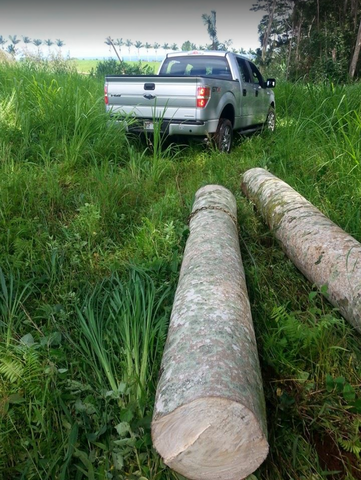
The initial surfboards were made from koa. Most importantly, koa was used to produce many Hawaiian outrigger canoes for fishing, sailing, and traversing islands.
In later years, “malihini” settlers from other countries introduced small stringed musical instruments that the Hawaiians called “ukulele,” of almost always created using koa wood.
Koa vs. Cattle. During the early 1800s, land on the Big Island was gobbled up with enterprising ranchers hoping to make use of these wide tracts of land to raise herds of cattle. Unfortunately, large tracts of koa forests were eliminated to produce a way for grazing cattle.
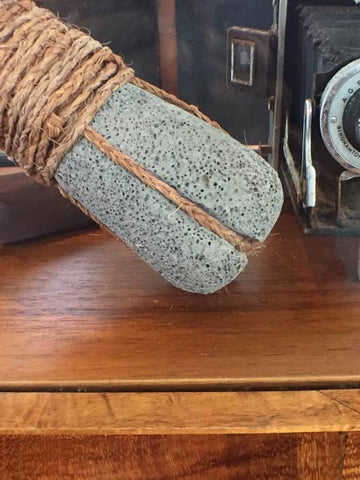
North of Hilo, Hawaii, there's a location now called umikoa, which was once a thick koa forest owned by King Kamehameha the Great. Unfortunately, nearly all the koa trees were eliminated for herds of cattle that roamed the region. Additionally, other livestock introduced to Hawaii, including pigs and goats, would graze on young koa seedlings before they'd an opportunity to mature.
Very often, fences used to split up plantations on the Big Island were built from Koa. This is before westerners or “malihini” came to regard Koa as an attractive resource.
The demand for Hawaiian koa continues to grow. In spite of decades of without attention or regard, today koa keeps growing on all Hawaiian Islands, particularly the Big Island. The rich volcanic soil of this largest, youngest island yields koa that is particularly dark and red. The absolute most beautiful koa wood as a wavy, fluttering cross-grain pattern called “curly,” which is sometimes known as fiddle back. Only 10% of all koa is “curly.”
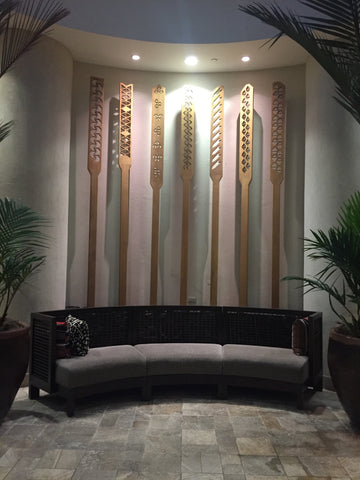
Today, Koa is so respectable for the beauty, that landowners find it a profitable revenue source, even way more than cattle. All koa harvested from the Big Island originates from previously dead and fallen trees. The State of Hawaii and plantation landowners are very strict about the harvesting of Koa and self-regulation is the conventional practice.
Koa hasn't been regarded as an endangered species, and it is unquestionably not even close to extinct. Because of self-management and the partnership of private and State interests, there's more koa growing in Hawaii since 10 or 20 years ago.
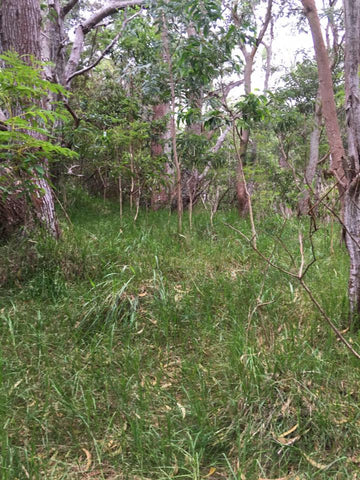
Green and Growing. Koa trees have a natural life cycle of about 50-80 years because of the natural rot and decay that happens to the trees over time. In the event that you ever have an opportunity to go to the mid-elevations on the Big Islands, you might find that the circle of life continues as new koa trees are growing amidst trees that have naturally died and fallen.
Big Island landowners today don't reduce any live koa trees. On the contrary, when dead koa trees are taken off the mid-level elevations, new koa seedlings are quick to sprout. Today, the fences keep carefully the cattle and pig out of the areas where new koa trees are growing. Ironically, the fences once erected to help keep cattle within boundaries are now erected to help keep the cattle out of the areas where young koa trees are growing.
Today, the artistry and craftsmanship in milling and transforming koa wood is Hawaii Bookmark, a local company that has been making koa furniture and Hawaiian heirloom boxes and jewelry on the Big Island of Hawaii for over 10 years. Owners of Hawaii Bookmark hand-select the finest reclaimed Hawaiian koa wood for their beautiful furniture projects.
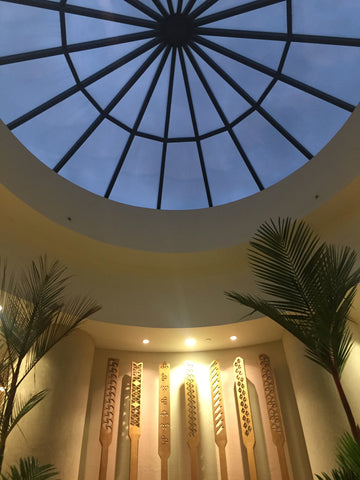
All the reclaimed koa wood originates from previously dead and fallen trees. In reality, Hawaii Bookmark is committed to reforesting Hawaiian Koa for future generations.
Hawaiian koa has a deep and rich history in the heritage of the Hawaiian Archipelago. Koa wood will remain an important and thriving resource in Hawaii for future generations to enjoy. Hawaii Bookmark will continue to create and innovate sustainable production practices for all locally sourced resources.
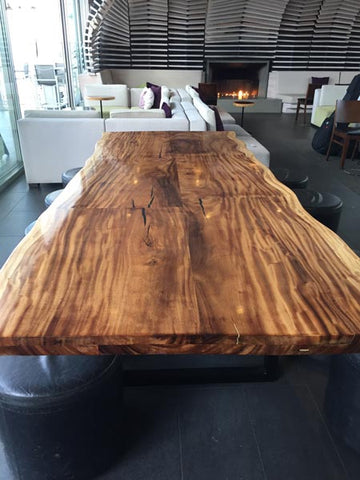
🌴 Live the Island Life
Love the look of Koa? Upgrade your wardrobe with our new Koa Woodgrain Aloha Shirt and matching Board Shorts.
Designed in Hawaii. Custom printed just for you.